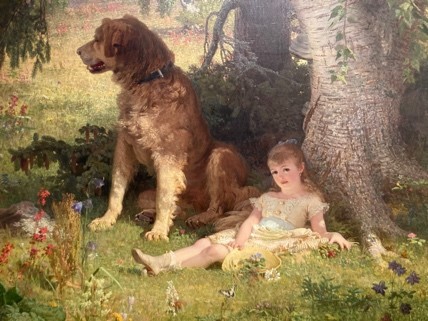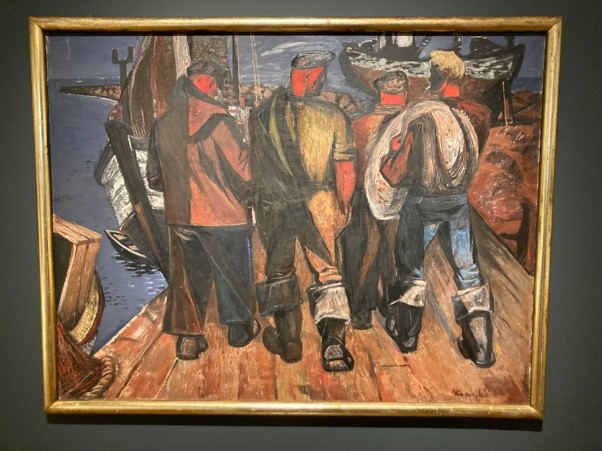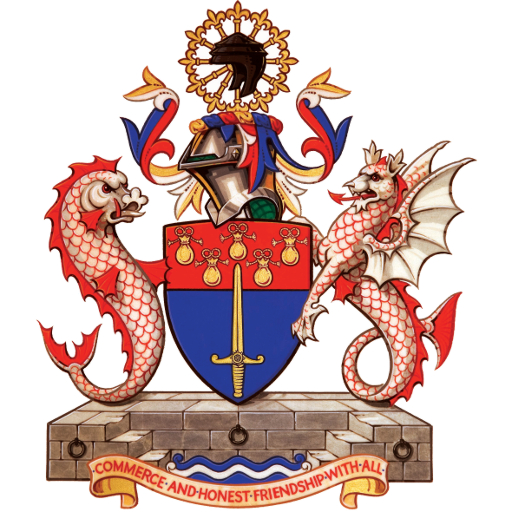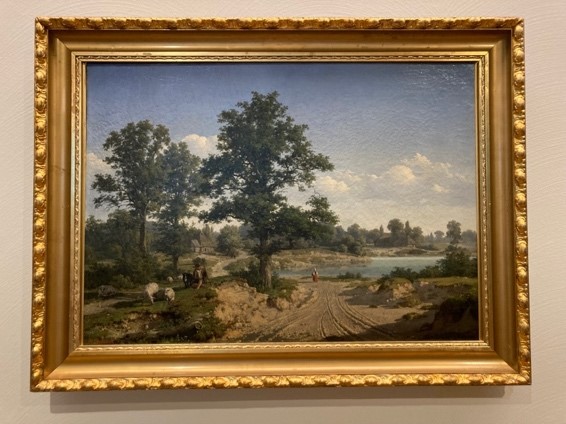On the morning of Wednesday, 7 June, a number of World Traders visited the Kumu Art Museum in Tallinn to observe and absorb the country’s art and culture.
This excellent museum opened in 2006, with the aim of preserving and interpreting Estonian art from the 18th century to the present day – which it’s greatly succeeded in doing.
While there wasn’t time to go round all the Museum (though we would gladly have spent a whole day there…), the group of members headed to the two permanent exhibitions held on the third and fourth floors, showing Baltic German artistic heritage from the 18th and 19th centuries, and an overview of Estonian national art from the first half of the 20th century.

The mood darkened considerably as we moved to the fourth floor and looked at Soviet Estonian art and the art of the 1990s. Here there were many pictures of workers (Soviet style), soldiers and weapons.

Most chilling of all was this framed quote from Jaan Jenson, written after the beginning of the Soviet occupation:
“During the 3.5 years since the liberation of the Estonian Soviet socialist Republic from the German invaders, our homeland has made significant progress… The unique era we live in, the decisive battle that is taking place between the communist new and the reactionary, capitalist old, requires each progressive minded writer, each intellectual, to depict this ongoing battle, and support it. Whatever activity an intellectual of a socialist country is involved in, whether it is a work of literature, a painting, a sculpture, a stage setting or an architectural design, whether it is the monograph of a scientist or the work of a teacher in moulding the younger generation in the classroom, he or she must bear in mind the historical struggle, the breath of the newly born communist era.
“I believe the time has come for every soviet intellectual to ask: have I done everything in my power to contribute maximally to this gigantic struggle between the old and the new, or am I still lacking? Any intellectual who, after years of work, is still doubtful or undecided, risks being left behind while the people push on: he or she risks turning into progress-hindering ballast, and the fate of ballast is clear: it is cast aside as an obstructive factor.”
The final question we found ourselves asking as we left was: are we in danger, in today’s culture, of once again casting aside ideas that don’t serve a certain way of thinking?
In 2008, the Museum received the European Museum of the Year Award.

